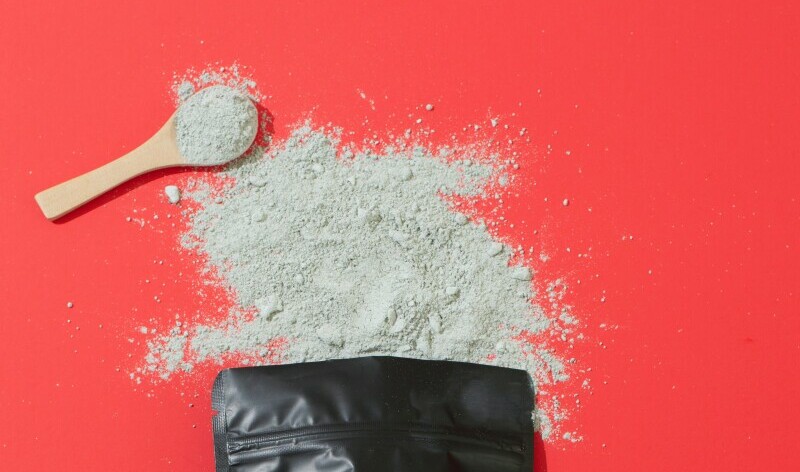Finding the optimal protein powder for you can be a difficult task, to say the least, as there are so many elements you need to take into account. First and foremost, there’s the type of protein. There are many different types of whey protein and plant-based protein, as well as protein derived from other sources. Simply trying to find the best source of protein for you can be quite the endeavor.
On top of that, however, there are many other factors that can truly differentiate superior protein supplements from the rest. In addition to the source of protein, here are some other important things to look for in protein powder when comparing products from different brands.
High in Protein, Low in Calories
The first thing to look for is a low protein-to-calorie ratio.
Many protein sources, especially those that are animal-based, have lots of naturally-occurring fats and carbohydrates that are relatively high in calories. The more refining you can do to separate out those other byproducts, the more excess calories (those that don’t come from the protein itself) you can remove. That’s why whey isolate, a more refined form of whey protein, tends to be lower in calories than whey concentrate, which doesn’t undergo as much processing, and is one of the reasons I recommend it for most people among common types of protein powder.
As for what you should be targeting, you want a protein supplement that has about 20 grams of protein per 100 calories. In general, protein powder is already a very efficient way to get your protein, but this ensures you’ll really be using as few calories as needed in order to meet your protein requirements.
This is obviously beneficial if you’re on a calorie restriction, but even if you’re not necessarily trying to be in a deficit, it’s not like those additional calories in more calorie-dense protein powders are doing anything for you, since they’re just coming from fat. You might as well save those calories for things that are more enjoyable and nutritious.
Avoid Proprietary Blends
If you ever come across the term “proprietary blend” on the packaging of a protein powder, it’s best to avoid these products. In reality, proprietary blends are used to reduce the cost of manufacturing by mixing in cheap filler ingredients. For example, instead of packing a container full of whey isolate, which would be quite expensive, companies may come up with a blend that replaces a portion of the isolate with lower-quality ingredients that aren’t as high in protein or may barely contain any protein at all.

The problem is that while companies must list all the ingredients used in the blend, they’re not legally required to say how much of each ingredient is used. Therefore, even if the “main” ingredient is a high-quality protein source like whey isolate, you can’t tell if that truly makes up most of the blend or is just used in a slightly higher quantity than the next filler ingredient on the list. In both cases, you’re not getting as much of the actual ingredients that you want, but especially in the latter case, you’ll be getting much less than you think you’re paying for.
Although you won’t be left totally in the dark, since you can still see the total protein content and the calorie-to-protein ratio for a product that uses a proprietary blend, it just doesn’t make sense to waste money on empty ingredients that won’t benefit you in any way. Instead, it’s better to invest in a protein powder in which you know exactly what you’re getting.
Other Ingredients to Watch Out for
Besides being on the lookout for proprietary blends, there are a few other things you’ll want to pay close attention to when reading the nutrition label.
As with many other foods, you should avoid protein powders that have lots of added sugars; you don’t want more than a couple grams of sugar per serving at most. Fortunately, this won’t be too difficult since many protein powders only contain 1-2 grams of sugar per serving, but you’ll definitely want to stay away from those that exceed this amount.
It’s also a good idea to avoid artificial ingredients, whether they’re part of a proprietary blend or just another listed ingredient. In the end, the only ingredients a protein powder needs are the protein source and ingredients for natural flavoring. When it comes to other added ingredients, most of us frankly don’t know what they’re used for and what effects they’ll have on us. Therefore, the next time you’re reading the nutrition label of a protein powder and come across a long list of ingredients with many words you don’t recognize, that’s probably a good sign to put it back on the shelf.
Never Be Fooled Again

Shopping for protein supplements can be extremely overwhelming if you don’t know what to look for. There are so many companies each offering countless variations that what you ultimately end up with and how good it turns out to be really just comes down to luck. This is only made worse by the fact that many companies rely on you not really understanding what you’re buying so they can sell you expensive products that aren’t actually all that great.
That’s why in this case, a little research goes a long way. Once you figure out what protein source is optimal for you, what to look for when reading nutrition labels, and what all those complicated words on the packaging really mean, you’ll be able to quickly narrow down your options to those that are actually effective and of high quality. You can make much more educated decisions so that buying protein supplements no longer feels like a complete guessing game.

